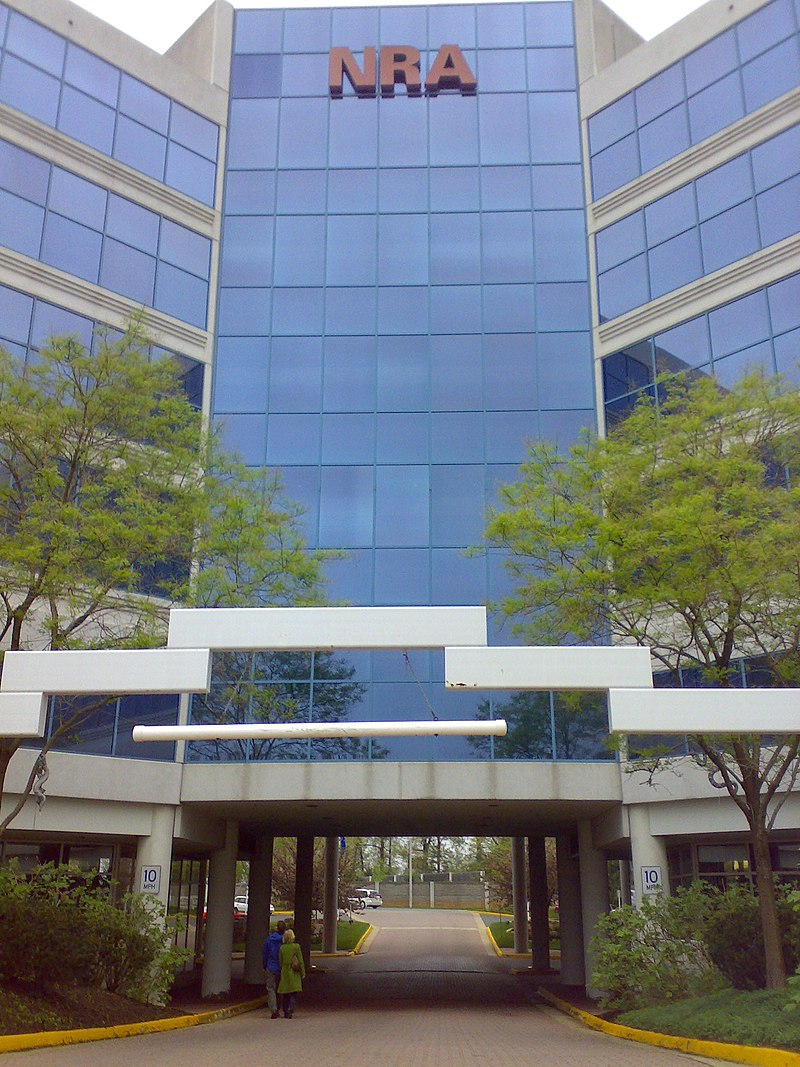 |
| NRA headquarters |
Guns and the gun lobby have once again been in the news. On one hand we’ve had another (deadliest
ever) mass shooting – I’ll let you find your own reference for that. On the other hand Donald Trump has garnered
the National Rifle Association’s (NRA) endorsement
for president. Both of these items of
course feed into the ongoing debate about guns and gun rights.
Now I don’t want to pick sides in this post – libertarians
have their coherent views as
do gun law reformers. What I do want to look at is a hidden
(perhaps in plain sight) aspect of the NRA that doesn’t seem to get mentioned
whenever the group pops up in public. If
people knew about this aspect then perhaps people could better understand the
world and therefore make better informed decisions when it came time to vote or
donate money, etc.
Founded in 1871, “the
group has informed its members about firearm-related bills since 1934, and it
has directly lobbied for and against legislation since 1975”. In 2015, the NRA spent $3.6 million for
lobbying. This is out of a “war chest”
of $350
million of overall revenue. By law, the
gun industry cannot donate to the NRA’s political action committee. This is no problem since the $22 million
individual donors give is more than enough to cover the $3.6 million mentioned
above. The reason behind people’s
contributions may perhaps be summarized one of the individual
donors: “It is a good percentage of my income [5-10%], but I want to do
everything I can easily do to preserve my freedoms”.
The above quote from the individual donor comes from a CNN
story that highlights the increase in donations from individual donors. While this is interesting to note we must
still understand that the vast majority of donations to the NRA overall come
from the gun industry. As Josh
Sugarmann, executive director of the Violence Policy Center says, “Today’s
NRA is a virtual subsidiary of the gun industry. While the NRA portrays itself as protecting
the ‘freedom’ of individual gun owners, it’s actually working to protect the
freedom of the gun industry to manufacture and sell virtually any weapon or accessory”.
So this is the NRA’s hidden aspect. While the early NRA apparently
prided itself on “independence from corporate influence”, today it effectively
a PR wing of the industry as a whole:
There
are two reasons for the industry support of the NRA. The first is that the organization develops
and maintains a market for their products.
The second, less direct function is to absorb criticism in the event of
PR crises for the gun industry.
So what is this analysis worth? Another dimension is revealed, another
useless layer of understanding.
Corporations want to make money, fine.
Initially I wanted to clarify the idea I had that there is a link
between our domestic love of guns and the sale of weapons internationally. This would require finding a link between
those US/domestic gun manufacturers and the big, big US companies that sell
weapons abroad.
I want to back engineer the connection between the United States’
international role as the number
one weapon supplier and us a country that can’t figure out its mass shooter
problem. The NRA is definitely a link in
this chain. But understanding the
dollars and cents of the industry and its ties to government makes the false
assumption that the blame for mass shootings can be placed on a single entity
like the NRA.
We have a culture of violence. Perhaps you’ve heard this phrase used in
relation to movies and video games, television shows and toys. Again the idea that the problem can be fixed
by further regulating violence portrayed in video games, to get the idea of violence
out the heads of those that play them.
Amorphous, a problem of the psyche, solvable with curtailing the
prevalence of the media, in whatever form it takes.
More understanding is the solution, a constant
questioning. Solving gun violence should
be linked to the need to question making money perhaps instead. It should be linked to the need for people to
think for themselves and decouple from US culture as a whole. It may need us to question the narrative of progress. W.W. sums it up nicely:
This
question moves us into the frustrating domain of vague cultural explanations.
It all has something to do with the violent rebellion of the American founding,
with the anarchy of the American frontier, with the threat of hostile natives
and the fear of slave revolts. We don't know why the will to gun-up persists so
strongly in America, but it does. We don't know why gun-ownership seems more
like a precious, basic right to Americans than it does to the citizens of other
developed countries, but it does. We don't know why Americans are so obsessed
with movies, television and games about the glamour of killing people (and
animals and monsters and aliens and robot) en masse with guns, but we are. And
we don't know why every year or so a young white American male grabs some guns
and slaughters a roomful of completely innocent people, but it just keeps on
happening.
As William S. Burroughs wrote,
“America is not a young land: it is old and dirty and evil. Before the settlers, before the Indians . . .
the evil was there . . . waiting”.
 |
| Billy Burroughs |



